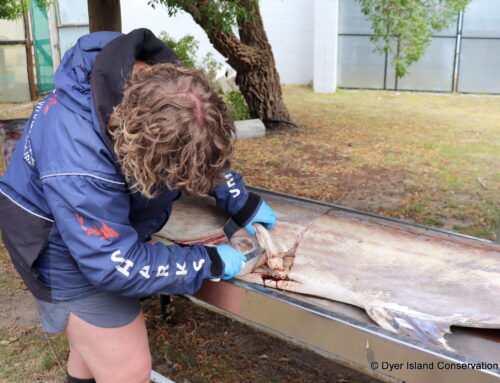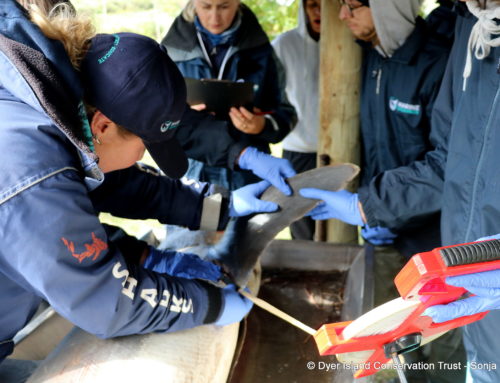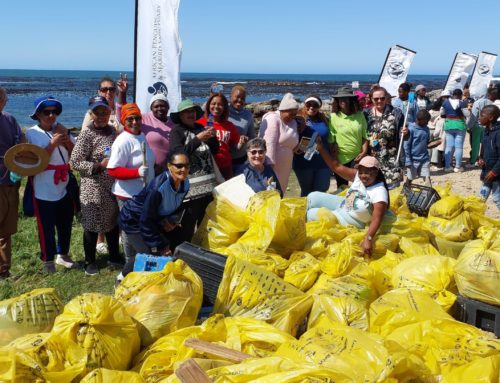Shark sightings
February 21, 2011 by dyertrust
February 2011 has been an excellent month. We have encountered some spectacular white shark sightings and a drastic improvement on shark numbers from December/January. Interestingly, white shark presence has only been documented at Dyer Island and not in the normal shallow water reef system of Jouberts dam. The only female shark we saw in the shallows this month was a 2.4m individual (Nina) who we subsequently tagged as part of theDICT research project. After the transmitter was attached to the shark, we tracked her movements continuously for 8 hours where she proceeded to move directionally away from the shallows towards Dyer Island. She has remained within the vicinity of the island until this date!
This is my 5th February working with Marine Dynamics and I have never before seen a) so many male sharks b) so few females and c) sharks at Dyer Island! So the question is why? Initially, we thought the presence of the sharks at the island was possibly a temporary scenario, but it seems that the sharks are readily attempting to predate on Cape Fur seal juveniles.
The photo of the seal here was taken by Nick Jones and confirms just this. Water temperature and environmental effects could be a key influence on the sharks presence at Dyer Island, especially since we are in the middle of one of the worst La Nina events this century. (See Neville Nicholls Article, 2011)
What we can say, is that many of these male sharks have bite wounds either on the anterior musculature, head, or gill regions, which indicates that there could be a degree of inter-specific (within the species) competition for food and space. The daily data logs from Marine Dynamics vessel have revealed, over time, some very interesting relationships between shark numbers and environmentals (in progress, Alison Towner). We are very excited to see the results of this data once it is collated.
Familiar fins
One particular shark who has returned to our area is Slice. This 3-meter male appeared in the bay the same time of year in 2010 and has a distinctive slice down the centre of the dorsal fin, which appears to have healed half way up now.
Another familiar fin, which arrived in the bay this February, was Jagger, a distinctive 3m male with an almost tin-opener shaped dorsal tip.
Durban Shark and Ray Meeting.
Oliver Jewell and I represented the Dyer Island Conservation Trust/Marine Dynamics by attending the first ever South African Shark and Ray meeting held at KZN sharks board, Durban. This eagerly awaited, three day symposium involved talks and presentations from scientists based all over SA in the elasmobranch field and saw the collaboration of regional and international NGOs such as Save our Seas,Oceans Education(Mossel Bay),South African Shark Conservancy (Hermanus)and of course the Dyer Island Conservation Trust (Kleinbaai). The scientists shared their knowledge on species in their respective areas, with details of ongoing research. The meeting was a huge success and addressed issues that need to be improved and focused on in the future. It seems shark research has come a long way in South Africa and this meeting has allowed scientists to put some solid concrete plans in place. Keep following our work and to support our project click here.





